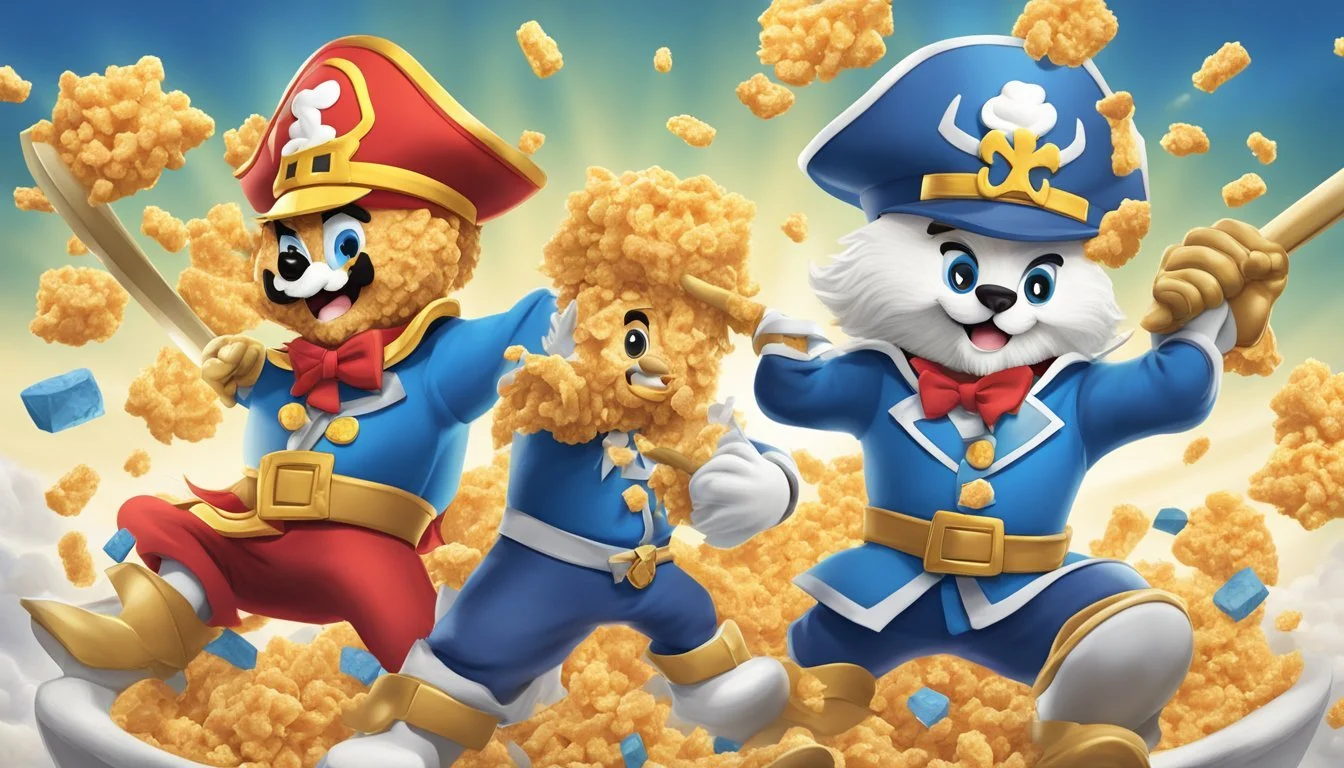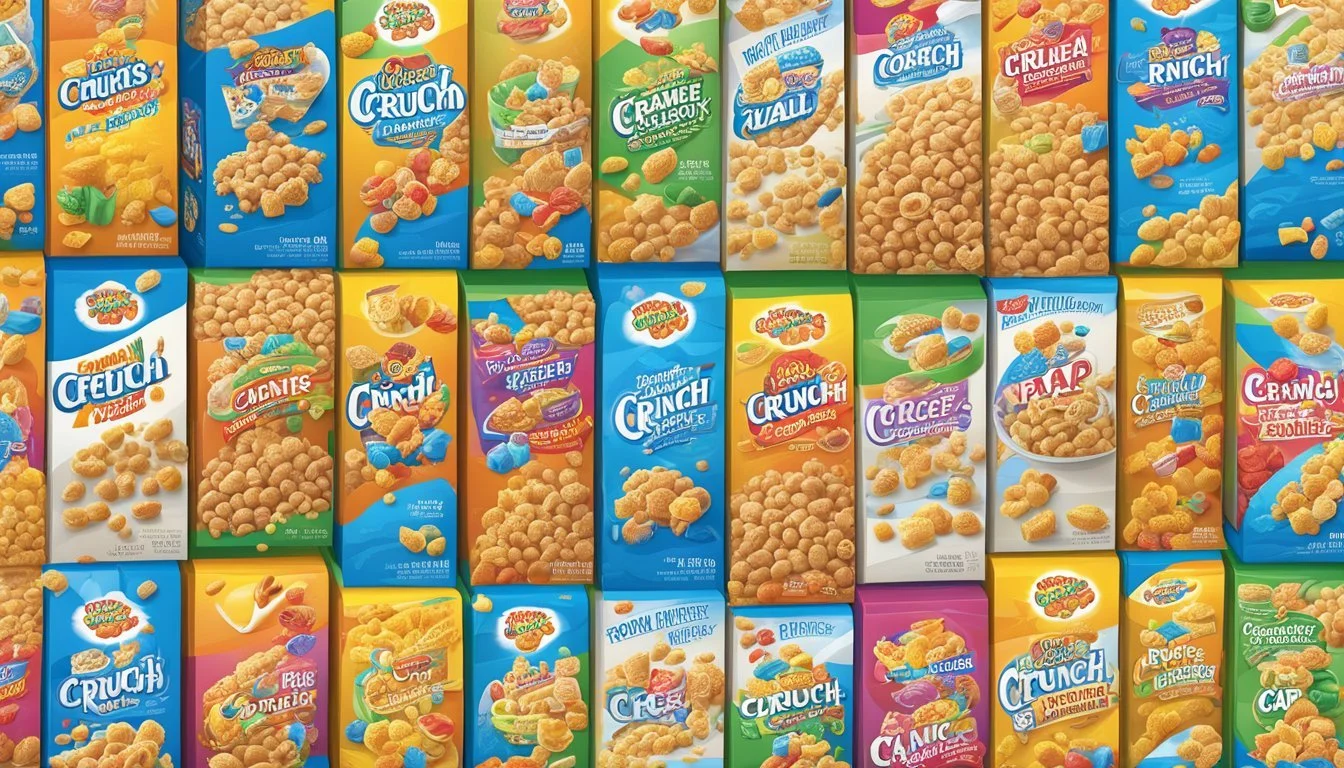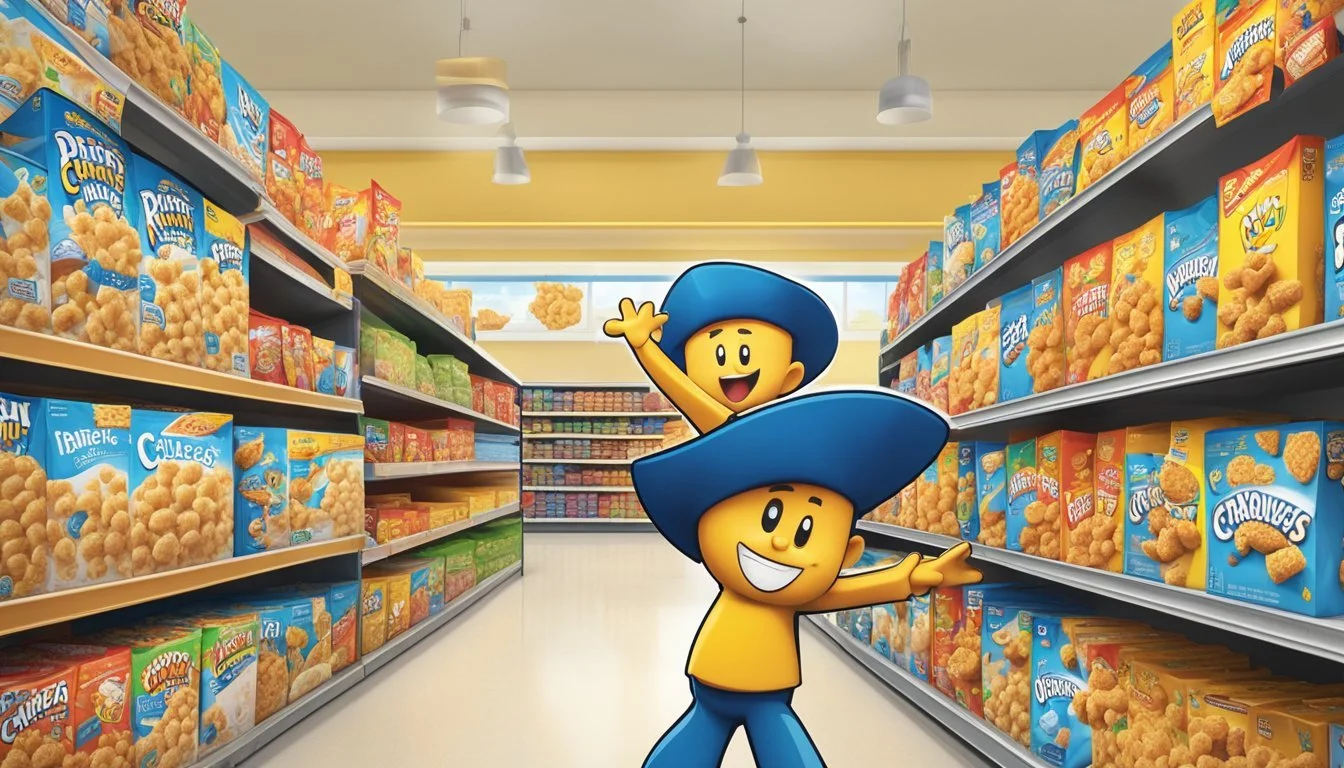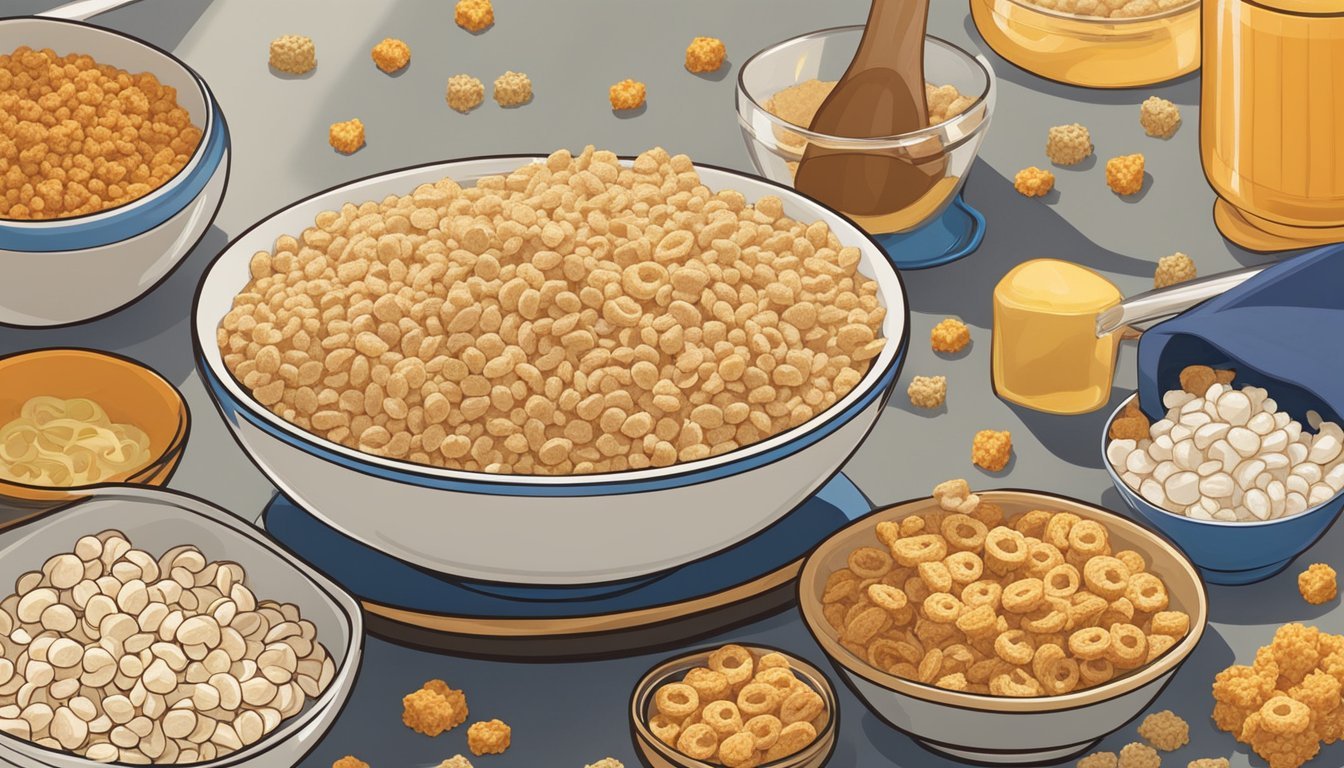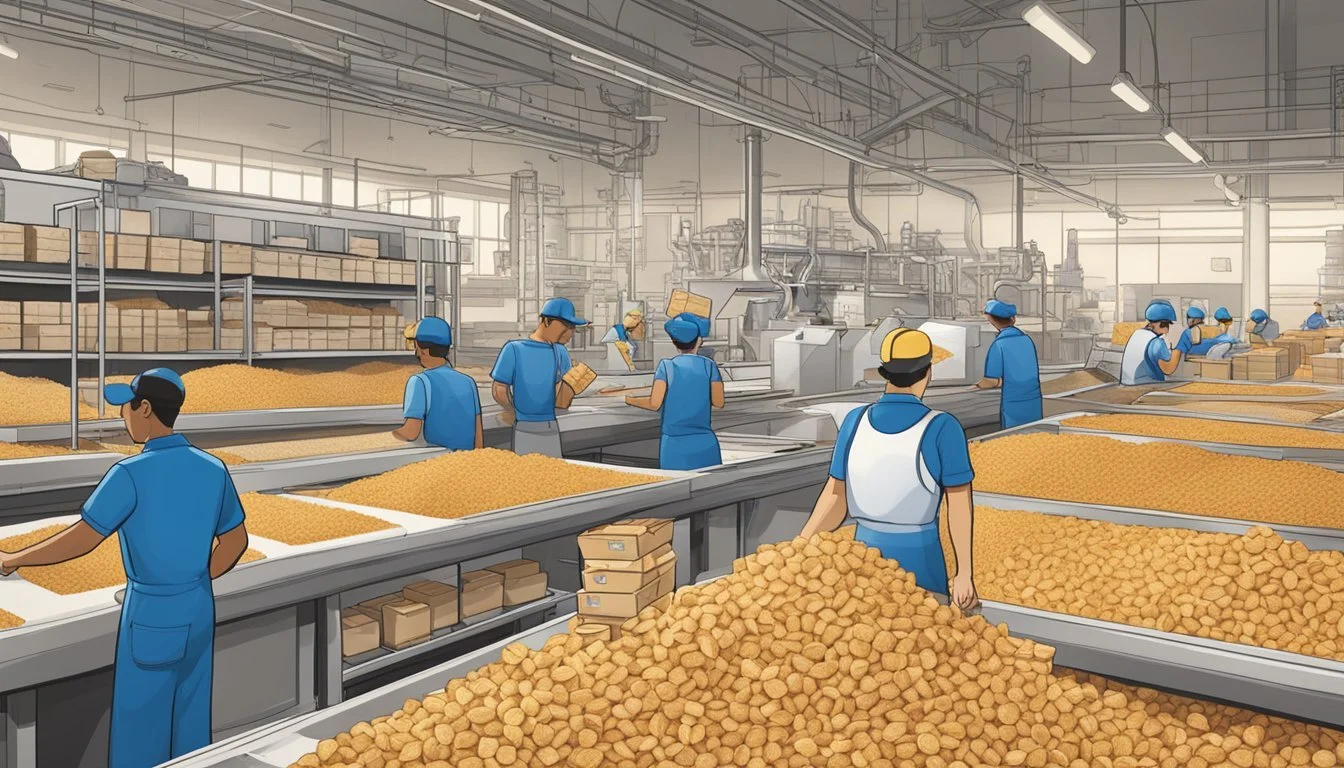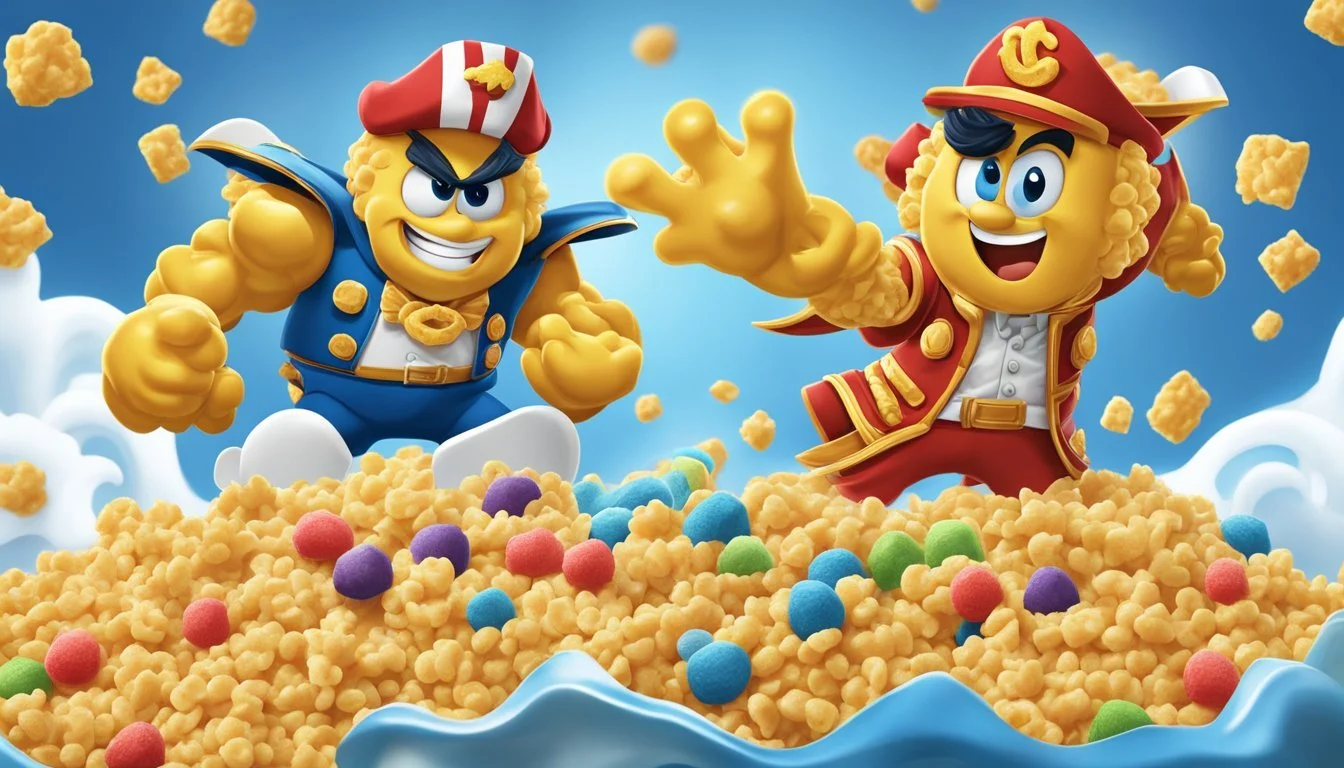Cap'n Crunch vs Rice Krispies
A Comparative Breakfast Cereal Analysis
This Article is Part of Our Breakfast Cereal Guide with Details on Cap'n Crunch Nutrition and Rice Krispies Nutrition
When it comes to breakfast cereals, two enduring favorites are Cap'n Crunch and Rice Krispies. These cereals have been breakfast staples for decades, each offering unique taste profiles and nutritional benefits. Cap'n Crunch is known for its sweet, crunchy texture and vibrant packaging, making it a hit among children and adults alike. On the other hand, Rice Krispies are celebrated for their light, crispy texture and the famous "snap, crackle, and pop" sound they make when milk is added. When comparing their nutritional value, Rice Krispies generally have fewer sugars and are lower in calories than Cap'n Crunch, making them a healthier option for those mindful of their sugar intake.
Cap'n Crunch provides essential vitamins and minerals, including a significantly higher amount of folate and iron. This makes it not only a tasty treat but also a fortified option for boosting daily nutrient intake. In contrast, Rice Krispies shine in their simplicity, often acting as a versatile base for other ingredients or recipes, like Rice Krispie treats.
Whether one opts for the sugary crunchiness of Cap'n Crunch or the crispy lightness of Rice Krispies, both cereals offer distinct experiences. This comparison will explore their flavor profiles, nutritional content, and versatility, helping readers make an informed choice for their breakfast bowl.
History and Origin
Cap'n Crunch and Rice Krispies have unique histories that reflect their longstanding appeal. This section delves into their creation, evolution, and cultural impact.
Cap'n Crunch Inception
Cap'n Crunch was introduced by Quaker Oats in 1963. The cereal was created by Pamela Low, a flavorist who aimed to capture the taste of brown sugar and butter on rice. This flavor profile appealed to children, helping Cap’n Crunch grow in popularity.
Marketing played a significant role. The character of Cap’n Horatio Magellan Crunch, often seen navigating the good ship Guppy, was designed by Jay Ward of Rocky and Bullwinkle fame. Advertising targeted children with adventurous storylines and catchy phrases.
Quaker Oats successfully branded Cap’n Crunch as not just a cereal, but an adventurous, fun choice for breakfast. Its unique sweet flavor and crunchy texture distinguished it from other cereals, cementing its place in the market.
Rice Krispies Evolution
Rice Krispies, produced by Kellogg, made their debut in 1928. The cereal is made by baking crisped rice, which allows it to create the signature "snap, crackle, and pop" sounds when milk is added. This auditory feature became a key marketing element.
Snap, Crackle, and Pop, the three iconic elves, were introduced as the mascots in the early 1930s. Each character represented different attributes: Snap as the problem solver, Crackle as the jokester, and Pop as the energetic center of attention.
A fourth character, Pow, briefly appeared in the 1950s, emphasizing the cereal's nutritional value. Another key milestone was the invention of Rice Krispies Treats, further enriching the product's legacy.
Nutritional Comparison
When comparing the nutritional profiles of Cap'n Crunch and Rice Krispies, several key aspects stand out. These include calories, sugar content, protein and fiber levels, as well as vitamins and minerals.
Caloric Content
Cap'n Crunch provides 120 calories per 0.75-cup serving. This is slightly higher than Rice Krispies, which offers 110 calories per 1-cup serving.
Despite the serving size difference, the calorie levels in these cereals are relatively similar, making both options low-calorie choices for a light breakfast.
Sugar Levels
Sugar content is a critical factor for many consumers. Cap'n Crunch contains a significant amount of sugar, contributing to its sweet flavor.
Conversely, Rice Krispies has a much lower sugar content, making it a preferred choice for those aiming to reduce their sugar intake.
Protein and Fiber Content
When it comes to protein, Rice Krispies wins with 2 grams per serving, while Cap'n Crunch offers just 1 gram per serving.
Fiber is another important consideration. Cap'n Crunch includes 2 grams of fiber, providing moderate dietary fiber. On the other hand, Rice Krispies falls short in fiber content, making Cap'n Crunch slightly better in this regard.
Vitamins and Minerals
Cap'n Crunch is fortified with higher levels of vitamins and minerals. It includes significant amounts of Folate, Iron, Zinc, and several B vitamins.
Rice Krispies also contains essential vitamins like Vitamin B12 and Vitamin C but in lower quantities. Additionally, Cap'n Crunch has 220 milligrams of sodium compared to Rice Krispies, which has 290 milligrams, making the former a better option for those monitoring sodium intake.
Product Variety and Flavors
Both Cap'n Crunch and Rice Krispies offer a broad range of flavors to appeal to different taste preferences. Each brand has unique variations that cater to both traditional and contemporary palates.
Cap'n Crunch Varieties
Cap'n Crunch is known for its distinctive crunch and wide array of flavors. The original Cap'n Crunch Cereal remains popular, but other varieties have notably expanded the brand's offerings.
Crunch Berries: This variety adds berry-flavored pieces to the original, providing a sweet and fruity twist.
Peanut Butter Crunch: Infused with peanut butter flavor, this version is a hit among nut enthusiasts.
Chocolate Caramel Crunch: This combines the original buttery taste with chocolate and caramel, offering a rich, indulgent option.
The different varieties allow consumers to enjoy diverse flavors while retaining the classic Cap'n Crunch texture.
Rice Krispies Flavors
Rice Krispies is another classic with a broad spectrum of flavors. The original Rice Krispies are well-known for their simple taste and versatility.
Original Rice Krispies: These are the standard, mild-flavored rice cereal that can be enjoyed plain or used in various recipes.
Cocoa Krispies: This chocolate-flavored variety offers a sweeter option, appealing to those who prefer richer cereal.
Rice Krispies with Marshmallows: Enhanced with marshmallow bits, this type delivers both texture and added sweetness.
The variations on the basic Rice Krispies formula provide options for those who like to mix up their morning routine with different flavors and textures.
Cultural Impact
Both Cap'n Crunch and Rice Krispies have left a significant mark on popular culture, influencing breakfast trends and integrating themselves into everyday life with their memorable mascots and extensive advertisements.
Pop Culture Presence
Cap'n Crunch and Rice Krispies have both held a prominent place in pop culture over the decades. Cap'n Crunch, known for its colorful boxes and sweet taste, often appears in TV shows and movies, symbolizing a fun and indulgent breakfast choice.
Rice Krispies, with its iconic "Snap, Crackle, and Pop" sound, frequently features in commercials and media, highlighting its simple ingredients and nostalgic appeal. This sound is often parodied and referenced in various forms of entertainment, emphasizing its cultural relevance.
Commercial Mascots
The mascots of these cereals are crucial to their identities. Cap'n Crunch features the amiable Cap'n Horatio Crunch, clad in his navy uniform, who is a staple in television commercials known for adventures to protect the cereal from soggy doom.
Rice Krispies is represented by Snap, Crackle, and Pop, three cheerful gnomes whose presence in advertisements dates back several decades. Their catchy slogan and engaging antics in commercials have made them unforgettable figures in breakfast culture. Both mascots play a vital role in branding and consumer recognition.
Consumer Market
Sales data and brand loyalty are crucial components in understanding the consumer market for Cap'n Crunch and Rice Krispies. Looking into sales trends and consumer preferences can provide valuable insights into each brand's standing.
Sales and Trends
Cap'n Crunch, under PepsiCo, and Rice Krispies, a product of Kellogg, compete fiercely in the cereal aisle. According to recent IRI reports, Cap'n Crunch has seen steady sales, driven by its distinctive flavor and targeted marketing.
Rice Krispies, a staple by Kellogg, continues to appeal to families due to its versatility and longstanding presence.
Rice Krispies generally retails at an average unit price with high-volume sales from retailers like Walmart and Target. Market trends show a slight shift towards healthier options; despite this, cereals with nostalgic value like Cap'n Crunch maintain a solid consumer base.
Brand Loyalty
Brand loyalty plays a significant role in the cereal market. Cap'n Crunch, with its memorable mascot and unique taste profile, enjoys a dedicated following despite its higher sugar content. Consumers often remain loyal due to childhood memories and the brand’s consistent flavor.
Rice Krispies, famous for its "Snap, Crackle, Pop!" mascots, garners loyalty through its health-oriented image and versatility in recipes like Rice Krispie Treats.
Both brands leverage extensive ad campaigns and in-store promotions to retain customer loyalty. Kellogg and PepsiCo's strategic marketing efforts strengthen the bond between their cereal brands and consumers, ensuring continued purchase patterns.
Versatility in Recipes
Cap'n Crunch and Rice Krispies show distinct differences in culinary versatility. Both cereals can be utilized in a variety of recipes, from homemade treats to professional culinary creations.
Homemade Treats
Cap'n Crunch is a favorite in many homes for creating a range of sweet treats. A popular choice includes Cap'n Crunch Treats, where the cereal is combined with butter and marshmallows, similar to a classic Rice Krispie treat.
These treats can also incorporate other ingredients like chocolate chips or peanut butter to add unique flavors. The combination of sweetness from the cereal and the versatility of mix-ins makes it a favorite for homemade snacks.
Rice Krispies, known for Rice Krispie Treats, also follow a basic recipe of melting butter and marshmallows before adding the cereal. This simple yet effective recipe has been a staple in many households.
Variations can include additions like pumpkin seeds, chocolate chips, or even a drizzle of caramel to create different flavors and textures, showing the cereal’s versatility in home kitchens from bake sales to birthday parties.
Professional Use
Cap'n Crunch has found its way into professional kitchens as well. Chefs have been known to use the cereal to add a sweet and crunchy element to their dishes. For example, it can be used as a coating for fried foods to create a unique texture and flavor profile.
Moreover, in the world of pastries and desserts, Cap'n Crunch can be ground and incorporated into doughs or sprinkled on top for a crunchy finish. This displays its utility beyond the breakfast bowl.
Rice Krispies are also utilized by professionals, especially in baking and confectionery. They can be used to create sophisticated versions of Rice Krispie Treats by incorporating gourmet ingredients like dark chocolate or caramel.
Additionally, the cereal's neutral flavor allows it to be integrated into various recipes without overpowering other ingredients, making it a versatile tool in the hands of professional chefs seeking to add texture without strong flavors.
Health and Wellness
When comparing Cap'n Crunch and Rice Krispies, it's essential to focus on their dietary components and explore healthier alternatives for breakfast choices.
Dietary Considerations
Sugar: Cap'n Crunch has 12 grams of sugar per serving, whereas Rice Krispies contains only 3 grams, making Rice Krispies the better option for those watching their sugar intake.
Calories per Serving: A typical serving of Cap'n Crunch contains more calories due to its higher sugar content. Rice Krispies, being lighter on sugar, tend to offer fewer calories per serving.
Fiber: Both cereals lack dietary fiber, with neither providing any significant amount. Fiber is essential for digestive health, and its absence in these cereals is noteworthy.
Sodium: Cap'n Crunch usually has a higher sodium content compared to Rice Krispies. It's important to consider overall sodium intake, especially for those managing blood pressure.
Gluten-free: Neither cereal is labeled gluten-free, which may be a consideration for those with gluten sensitivities or celiac disease.
Healthy Alternatives
Whole Grain Options: Choosing cereals made from whole grains can provide more fiber and essential nutrients. Options like oatmeal or whole grain oats can be considered.
Low Sugar Varieties: Seek out cereals specifically designed to be low in sugar. Many brands offer alternatives with reduced sugar content.
Homemade Choices: Preparing homemade options like granola with natural sweeteners and nuts provides more control over ingredients and nutritional content.
Add Fruits: Incorporating fresh fruits like berries or bananas into cereal can add natural sweetness and a boost of vitamins and fiber.
Exploring these alternatives can lead to healthier breakfast choices that better support dietary needs.
Environmental and Ethical Practices
Both Cap'n Crunch and Rice Krispies should be evaluated not only for nutrition but also for their environmental and ethical standards. This includes their production methods and marketing strategies.
Sustainable Production
Rice Krispies are made from rice, a crop that is a staple for over half the world's population. However, rice production contributes to approximately 12% of global methane emissions. Kellogg's has initiated efforts to reduce this impact by engaging in more sustainable rice production practices.
Cap'n Crunch, which is made from corn and oats, also faces scrutiny. The use of controversial additives such as BHT and artificial coloring agents like yellow No. 5 and yellow No. 6 raises questions. Yet, there is less public information about Quaker's environmental initiatives compared to Kellogg's rice sustainability programs.
Ethical Marketing
Marketing practices for both cereals need evaluation. Cap'n Crunch is often targeted at children, with its colorful packaging and cartoon mascot. This raises concerns about promoting high-sugar cereals to a young audience. The cereal contains 12 grams of sugars per serving.
Rice Krispies, often marketed as wholesome, contain 3 grams of sugars per serving. Their marketing focuses more on family-friendly and health-conscious messaging. Ethical marketing also extends to transparency about ingredients and health impacts.
Kellogg's and Quaker should ensure their marketing practices adhere to ethical standards and contribute positively to consumer health and well-being.
Consumer Preferences
Consumer preferences for cereals such as Cap'n Crunch and Rice Krispies often revolve around their distinct taste profiles and textural characteristics. People tend to favor one over the other based on differences in flavor, sweetness, and crunch.
Taste Profiles
Cap'n Crunch is known for its sweet, sugary flavor. Fans of this cereal often cite its bold and distinct taste as a reason for their preference. The sweetness is pronounced, making it a favorite among those who enjoy sugary cereals like Fruity Pebbles and Cinnamon Toast Crunch.
In contrast, Rice Krispies offer a milder flavor. While not as sweet as Cap'n Crunch, it has a subtle taste that allows for versatility. This makes it a popular choice for those who prefer less sugary options or use it as a base for snacks, such as Rice Krispie Treats.
Texture and Crunch
The texture and crunch of these cereals are important factors influencing consumer choices. Cap'n Crunch is renowned for its firm, crunchy texture that holds well in milk. It provides a satisfying crunch that lasts, which appeals to those who prefer a more robust sensory experience.
Rice Krispies has a lighter texture and produces an iconic "snap, crackle, pop" sound when milk is added. This unique auditory experience, combined with its softer crunch, attracts consumers who enjoy a more delicate texture in their cereal. It is particularly favored for its pleasant mouthfeel and versatility in recipes, similar to cereals like Golden Grahams.
Different consumers value these textural contrasts, tailoring their preferences based on whether they enjoy a strong crunch or a softer bite.
Brand Strategies
Both Cap'n Crunch and Rice Krispies have adopted unique brand strategies to capture the market. They focus extensively on innovative marketing campaigns and understanding their target demographics.
Marketing Campaigns
Cap'n Crunch leverages nostalgia and vibrant branding to reach its audience. The brand's mascot, Cap'n Horatio Magellan Crunch, is prominently featured in commercials and packaging.
This character appeals to both children and adults who grew up with the cereal. Promotions often include collectibles and limited-edition flavors, creating a sense of urgency and exclusivity.
Rice Krispies employs a different approach. The commercial starring Snap, Crackle, and Pop emphasizes the product's sound and texture. These campaigns are often centered around the cereal's versatility, highlighting its use in both breakfast and snack recipes. Moreover, the brand focuses on health-conscious consumers, promoting its simple ingredient list and low sugar content.
Target Demographics
Cap'n Crunch primarily targets children and young adults. The brand's bold flavors and vibrant packaging are designed to stand out on grocery store shelves. Furthermore, the nostalgic element pulls in older generations, ensuring a broad age range of consumers.
Rice Krispies, on the other hand, caters to a slightly different demographic. The cereal's clean ingredients, low sugar content, and application in recipes appeal to health-conscious adults and parents.
The brand also capitalizes on its versatility, offering alternatives like Rice Krispies Treats, which are popular among families looking for easy snack options. This broader targeting helps maintain its position as a staple in household pantries.


